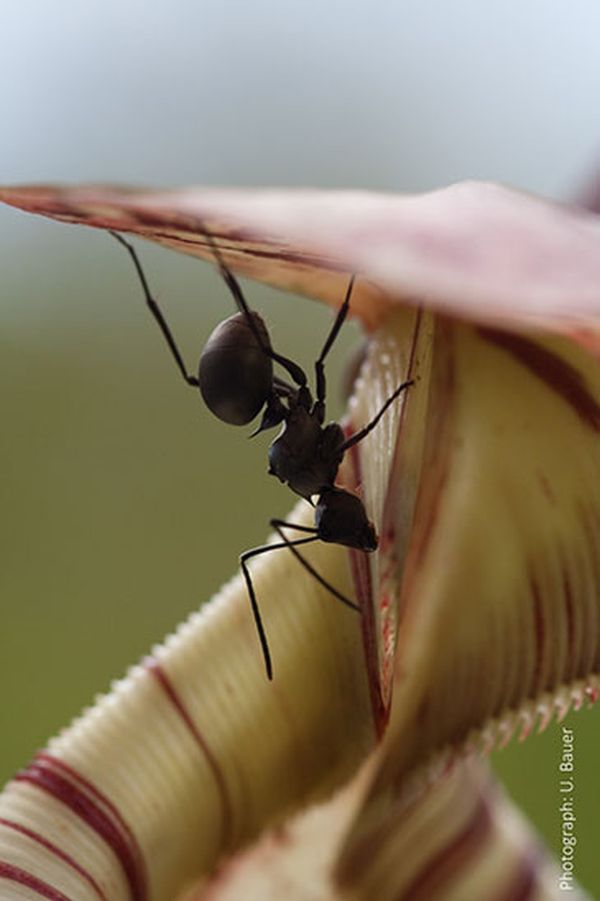Carnivorous vegetation like pitcher plants has adapted to thrive in areas scarce of nutrients. Unlike other plants that derive nutrients from soil, pitcher plants have evolved to derive essential nutrients by gorging on insects trapped in their pitcher like traps. Experts from the University of Cambridge, UK and the University of Bristol, UK, studying the pitcher plants say that the plants are smart enough to plan a strategy to attract more prey into their deadly traps.
Slippery surface for preying insects
Team of researchers from Bristol’s School of Biological Science, led by Dr Ulrike Bauer, selected tropical pitcher plants for the experiment. To seize insects, these plants use slippery pitfalls observed the team. Dr Bauer explained that the surface of the trap that is, pitcher, is very slippery when wet and not much slippery in drier conditions. The team noted that during dry seasons, the traps remain closed for nearly eight hours and do not trap-in any insects. This behavior puzzled the team because natural selection would support those traps that can attract and seize a maximum number of insects.
Closely studying pitcher plants in the wildness of Borneo, researchers noted that these pitchers every now and then open up, sweeping in large groups of ants belonging to the same species. The research team then conducted a trial in which they artificially kept the surface of pitcher wet. They discovered that these pitchers did not trap a large group of ants.
Social instincts in ants
As explained by Dr Bauer, in hot and sunny weather, the trap surface gets dry, which in turn becomes safe for ants to visit. As ants are very social, the scout ants after examining the trap and collecting nectar go back to their nest to inform other ants of the colony about the nectar location. Thus, the message gets spread to a large number of ants that march towards the site of nectar. Similarly, on occasions when the traps are wet and slippery, the scout ants’ get trapped thereby losing potential supply of ants. In short, recruitment of ant batches was curbed when researchers consistently kept the traps wet.
Occasionally rendering traps inactive makes sure that scout ants safely go back to their nest and inform other ants about the trap filled with nectar, said Dr Bauer. When the surface of the pitcher becomes wet, large number of ants get trapped in just one go. Initially this behavior of the pitcher plant looked like a disadvantage, but actually after the study, researchers suggest that this behavior is extremely smart strategy to trap a large number of ants or other social insects in one sweep instead of trapping and feeding on skimpy meals of few scout ants.
Intelligence quotient in plants
The research suggests that it is important for carnivorous plants like the pitcher plant that grow in nutrient poor environment to make strategies for ensuring a good supply of nutrients by trapping maximum insects to feed on. This also insinuates that some plants do have an IQ.
Source: University of Bristol




